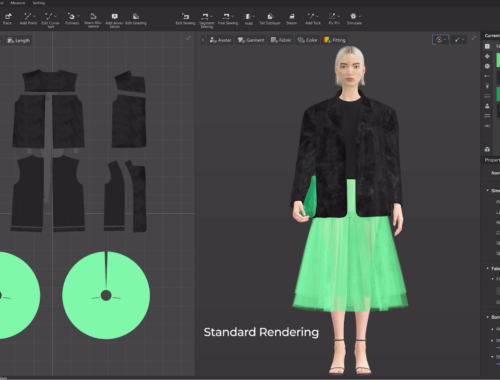The Influencers Fighting Instagram's Perfection
Meet the folks who want to turn your feed into a happy space
On a recent sun-drenched Sunday afternoon in New York City’s Bryant Park, Elyse Fox was laying out picnic blankets, colored pencils, squares of paper, and pink plastic cups with water.
The 27-year-old founder of the Sad Girls Club, a popular Instagram account devoted to destigmatizing mental health, particularly for young women and people of color, had taken her mission outdoors and IRL. It was time for their monthly art therapy gathering, an open invitation to any of the account’s 16,900 followers. Ingrid Mellor, an art therapist, was on hand, and the two hugged new arrivals, one by one, as they made their way to the blankets and art supplies. Many they recognized from previous meetups, but many were new faces.
Although a peaceful scene, these gatherings and the Sad Girls Club account mark a rebellion against today’s social media culture at large and, specifically, against Instagram. Fox believes the platform’s insidious influencer culture—the reason your feed is filled with perfect images of healthy, happy wellness gurus espousing feel-good truisms—may actually create a toxic environment for users. She and other critics posit that young women struggling with mental or emotional health battles are the most vulnerable.
“I think that we don’t really see representations of these girls or women who are openly speaking about mental health and the struggles that come along with it,” says Fox. “It’s covered up. We only see the niceness and positives. It’s hard for other girls who are going through difficult things, but they don’t have that representation in the media.”
Instagram, Facebook, Twitter, and YouTube have sparked a booming industry of so-called influencers—people with large-scale followings who are paid considerable sums by large companies to tout their products or ideas. What started for many as a side gig is now, by some estimates, a $1 billion industry. In April, even the Federal Trade Commission had to take notice, sending out more than 90 letters to influencers, nudging them to clearly disclose their product and brand relationships.
It’s perhaps an extreme, lucrative corner of a digital culture that many users are beginning to find odious. A survey of more than 400 undergraduates in Utah found that most respondents who spent more time on Facebook each week felt that other people—those whose lives they witnessed via social media—were happier and more fulfilled, compared to themselves. The Human-Computer Institute at Carnegie Mellon found that “passive consumption” of your friends’ social media feeds and your own “broadcasts” to followers may be tied to feelings of loneliness or depression.
Instagram influencers project a specific, highly crafted image of perfection—one that is largely white, thin, and psychologically Zen. Critics argue that this boom, in turn, has helped fuel excessive self-promotion in which we post about only the good moments rather than reality—essentially a distorted echo chamber. Not to mention the self-denial, self-critique, and, in its worst iterations, constant self-comparison that the industry has fostered in many followers.
Yet there is some reason for optimism, as a growing number of individuals are using Instagram as a platform from which to launch their counternarrative to these often hypocritical, manicured displays.
The Sad Girls Club is such a group. As members try to rewrite the wellness story, they aren’t alone. Instagram now has accounts like Body Positive Climbing and Fat Girls Hiking, which similarly extol the virtues of healthy living inside and out beyond the willowy wellness marketing tropes, with hashtags like #trailsnotscales and images of women giving the middle finger to body shaming. The hope is that by creating a safe space for dialogue about the real parts of life, these digital gatherings will help individuals engage with others about their problems and, in the long term, begin to heal.
In the case of Fox, it was easier to tell her friends and family about her battle with depression digitally than admit to it in person. Before starting her account, she had been one of those people who posted about all the good moments and none of the bad. “It looked like I had the perfect life online,” says Fox. “But they couldn’t see how I was living internally.” Last winter, she finally created and published a film on Vimeo documenting her struggles and experienced overwhelming support from friends and family that helped take her to a much healthier place. Sad Girls Club grew from that response.
What Fox had originally conceived as an account for a couple of fans had international followers within weeks, she says. Fox launched a Kickstarter to raise funds for a mental health circuit for the account, but it fell short of its $20,000 goal. That failure prompted her to refocus on expanding its base in New York and online. Since December, the group has met once a month and built a stronghold of followers. That rapid growth speaks to the need for such online communities that go far beyond the glossy realms of influencers.
“Building relationships outside of a platform is new to Generation Z,” says Fox. “But I feel like that’s something I grew up on and has been helpful for me.”
Em Odesser, a 17-year-old from New York, said she was drawn to the Sad Girls Club online and in person because she wanted more information about depression and anxiety. “You don’t learn about any of this in school,” she says. “It’s important to destigmatize the conversation. Everyone online is just supposed to look happy.”
Nearby, on a picnic blanket, Gabrielle Busch, an 18-year-old who just graduated from high school, nodded in agreement. “It’s all about the money,” she says. “They’re promoting this life, and the influencers can set the tone for everyone else. It’s unhealthy. It’s not real.”
By the time the watercolor painting was well underway, nearly two dozen young women (and at least one young man), mostly teens and twentysomethings, had sprawled along the blankets. Mellor had prompted the group to depict something they used to help cope, and then led the group in a discussion. Within minutes, they had colorful images of books, friends, sunshine. “I smoke weed,” said one woman, prompting a ripple of laughter. “A lot.”
Some had described struggling with addiction, either themselves or in their families. At least two had fathers who died in the past year. Many were stressed out about grades, as well as social issues in school or work. “My immigrant parents don’t get it,” said one woman.
“My parents said I was being ‘too theatrical,’” another said.
“You just want to know your shit is valid, you know?”
Many hacks were shared, including one from Jacqueline Randall, a 26-year-old from New Jersey, who spoke about the role water and physical fitness could play in mental health treatment. An impassioned swimmer, Randall fielded questions from attendees about triathlons. “Another reason you should exercise when you’re in your youth is so you can really kick ass when you’re older,” she said.
For Tara Wight, the reception that afternoon was heartening. She had followed Sad Girls on Instagram for most of the year, but this was her first appearance at an art therapy meetup. Wight had struggled with anxiety over the past couple months and said she was looking for ways to talk about and treat it without “having to call a bunch of friends and go on and on about it.”
“People need to be heard,” said Wight, finishing up a watercolor painting and letting it dry in the sun. “What impresses me here is not just their ability to talk, but their ability to listen to each other.”
Illustration by Lisk Feng
You May Also Like

Anemometer: The Instrument for Measuring Wind Speed
March 20, 2025
Dino Game: A Timeless Classic in the World of Online Gaming
March 22, 2025